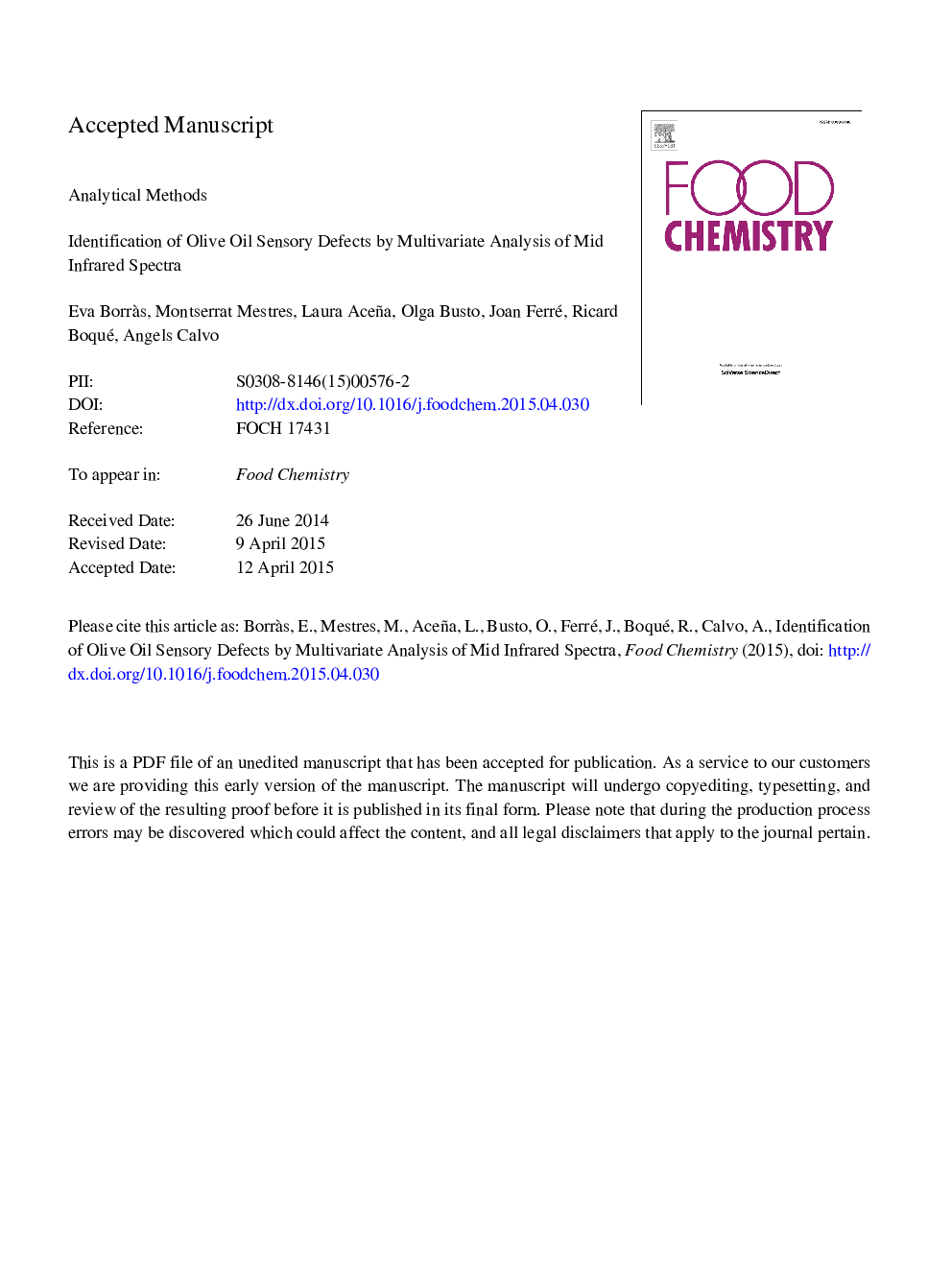| Article ID | Journal | Published Year | Pages | File Type |
|---|---|---|---|---|
| 7591639 | Food Chemistry | 2015 | 22 Pages |
Abstract
Mid-infrared (MIR) spectra (4000-600Â cmâ1) of olive oils were analyzed using chemometric methods to identify the four main sensorial defects, musty, winey, fusty and rancid, previously evaluated by an expert sensory panel. Classification models were developed using partial least squares discriminant analysis (PLS-DA) to distinguish between extra-virgin olive oils (defect absent) and lower quality olive oils (defect present). The most important spectral ranges responsible for the discrimination were identified. PLS-DA models were able to discriminate between defective and high quality oils with predictive abilities around 87% for the musty defect and around 77% for winey, fusty and rancid defects. This methodology advances instrumental determination of results previously only achievable with a human test panel.
Keywords
Related Topics
Physical Sciences and Engineering
Chemistry
Analytical Chemistry
Authors
Eva Borrà s, Montserrat Mestres, Laura Aceña, Olga Busto, Joan Ferré, Ricard Boqué, Angels Calvo,
